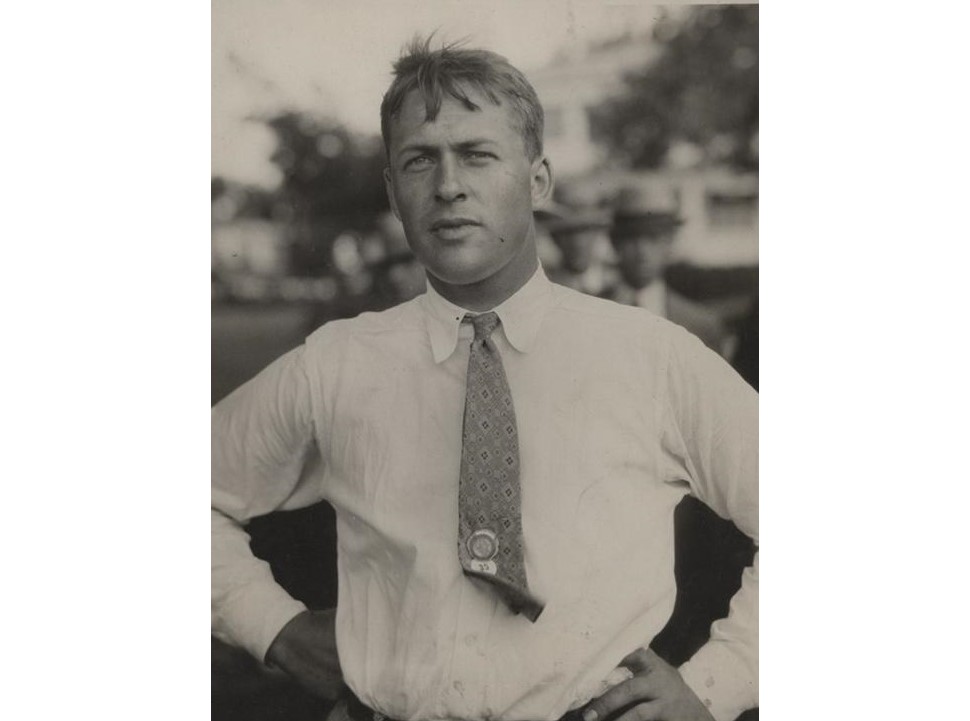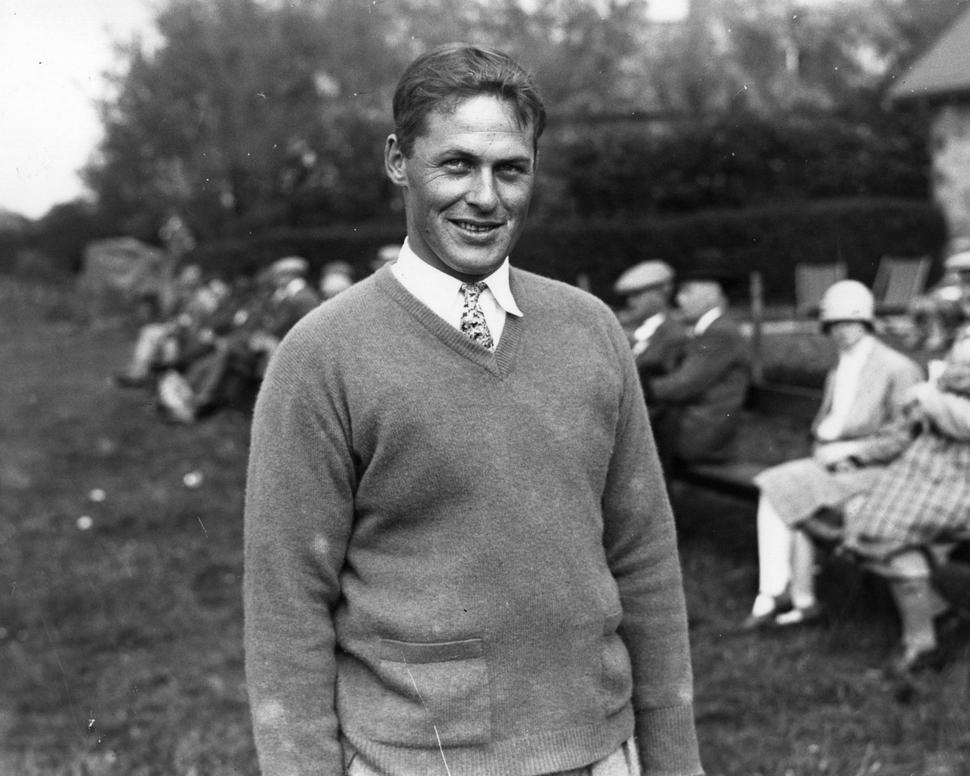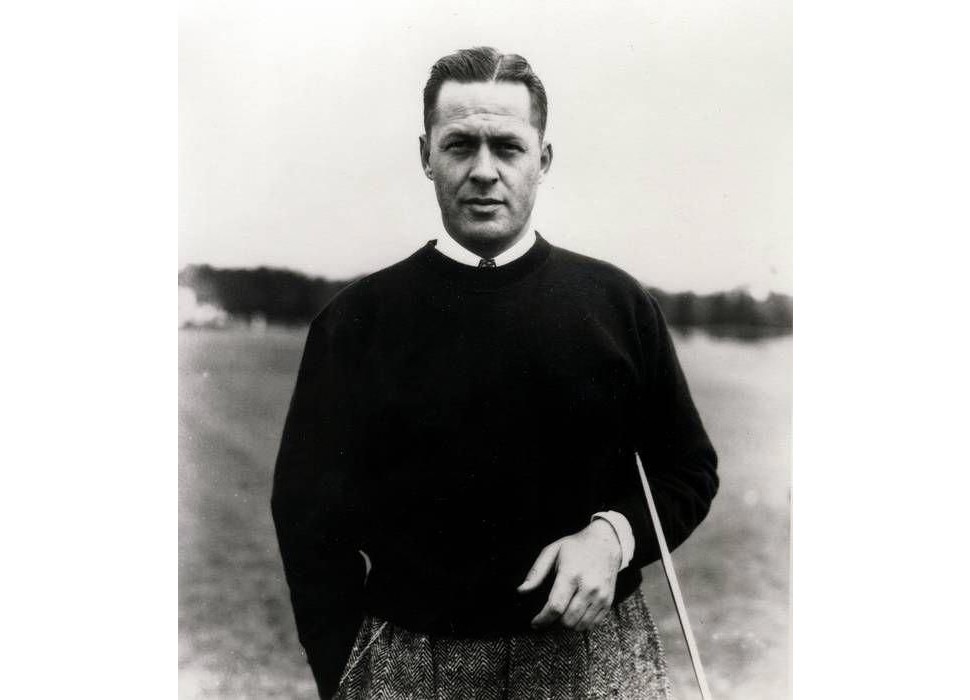Greatness. Defining it becomes a much harder proposition especially when assessments need to take into account different eras that golfers competed.
The recent debate on who is the greatest player golfer of all-time has centered around just two names, Jack Nicklaus or Tiger Woods. Each player has strong cases. Each with fervid supporters. Left out of the conversation is the brilliance shown by the legendary Bobby Jones whose prime playing years trace back nearly one hundred years.
For many, the Jones mystique today is primarily linked with being one of the two co-founders of the Augusta National Golf Club. The 87th edition of the famed Masters takes place April 6-9 and brings together the finest players in the world competing for the coveted Green Jacket.
Both Nicklaus and Woods demonstrated stellar records at Augusta with Jack claiming a record six titles and Woods just one behind with five. Jones played in the Masters between 1934-1948 but primarily in the role of ceremonial host. His effective competitive days were in the rear-view mirror after his retirement from active competition in 1930 at age 28.
Longevity in playing elite level into one’s 30s and even 40s is something Jones cannot match with Woods and even more so with Nicklaus.
Jones career was also far shorter than either Jack’s or Tiger’s, but his eight-year zenith from 1923-1930, while representing the Atlanta Athletic Club, was nothing short of breathtaking.
Brilliance off the course tooJones graduated from Tech High School in Atlanta at age 16. Received a degree in mechanical engineering from Georgia Tech at age 20 (1922). He was admitted to Harvard and received a B.S. in English Literature in 1924. From 1926-27, Jones attended Emory University Law School for one year and took the bar examination. He passed it on the first attempt and was admitted to the Georgia bar in 1928, joining his father’s law firm. In all his writings on golf, Jones never engaged a ghostwriter to assist him. Jones penned over a half million words for various newspaper columns written for the Bell Syndicate from 1927 to 1935. He would also author four books and was a contributor to the American Golfer magazine. |
Nicklaus and Woods, like Jones, were prodigies in their teens. Each proving early on the capacity to go beyond the high expectations placed upon them.
Nicklaus won two U.S. Amateurs and nearly claimed the 1960 U.S. Open as an amateur. At 21 he started his rapid ascent winning the 1962 U.S. Open via a playoff win against Arnold Palmer at Oakmont.
Woods made his mark even sooner than the Golden Bear. Claiming three consecutive U.S. Junior titles and then three straight U.S. Amateur titles before turning professional. Tiger then took professional golf by storm with a record 12-shot win in 1997 at Augusta, becoming the youngest Green Jacket winner in the history of the event.
Jones could not play in the U.S. Junior when eligible because the event did not exist until 1948. But he did play in the U.S. Amateur and over an eight-year period won a record five championships, all at match play.
There will be those claiming Jones winning the U.S. Amateur is not comparable to when Nicklaus and Woods did so. There is truth in that because the overall competition intensified in the years to come with greater depths of highly skilled players. However, to Jones immense credit he was under considerable pressure whenever competing in never wavering and raising his game up to the task of securing the victory.
The Old Course’s connection to Jones, Nicklaus and WoodsThe intersection of The Old Course at St. Andrews is front and center with Jones, Nicklaus and Woods. Jones captured the 1927 Open Championship and 1930 British Amateur at St. Andrews. Nicklaus won the 1970 and 1978 Open Championships there and Woods would win twice at the famed links in 2000 and 2005 respectively. |
Jones exceeds Nicklaus and Woods with his exemplary wins against the best professionals of his day. By the age of 28 Jones had won a record tying four U.S. Opens and three Open Championships. To put that into perspective, Nicklaus and Woods each won both Opens but no more than a maximum of three times each by the age of 28. In short, you could combine the Nicklaus and Woods totals in the U.S. Open and The Open Championship and that number would still come up one short of the Jones total.
Even if one were to add all of the majors won by Nicklaus and Woods before turning 29 the total would come to seven for Jack and eight for Tiger respectively. One has to keep the following in mind, Jones never played in the PGA Championship since he was an amateur and the Masters did not commence until 1934 when Jones’ best competitive days were behind him.
How dominant was Jones? In eight appearances in the U.S. Open from 1923-1930 his worst performance was T11 in 1927. In the other seven instances he won four times and was runner-up on three occasions.
Jones competed in 21 major events between 1923-1930. Winning 13 total for an unsurpassed winning percentage of 61.9 percent. In comparison Woods played in 32 majors spanning his 1997 Masters win through the end of the 2004 season for a 25 percent total. Quite impressive but dwarfed by Jones. Jack’s win percentage spanning from his 1962 U.S Open win through age 28 had a major winning percentage less than Tiger’s.
Defending titles wonJones is one of only six men to have won the U.S. Open and The Open Championship in the same year (1926, 1930). The others are Gene Sarazen (1932), Ben Hogan (1953), Lee Trevino (1971), Tom Watson (1982) and Tiger Woods (2000). Jones, however, is the only to have achieved it twice. |
No one can say with any certainty how many majors Jones might have won, if any, had he continued to compete into his 30s and even 40s. But his eight-year span of total dominance still remains front and center. In sum, Jones did not have a lengthy career where wins were piled up from numerous years competing.
If there is a comparable sport figure whose dominance was short lived but totally profound one can mention the likes of Major League Baseball pitcher Sandy Koufax.
Jones and Koufax shared similar paths before greatness emerged. Jones had to overcome a periodic temper that could erupt at inopportune moments. The most noted coming in 1921 when competing in The Open Championship at The Old Course at St. Andrews. Jones could not escape the frontal bunker at the 11th hole during the third round and simply tore up his scorecard and walked off. Koufax was extremely wild early on and the Dodgers pitcher seemed destined to be a journeyman prospect.
Each man went through a major transformation and each brought to bear via a compressed time frame a singular greatness that to this day is held in awe.
Jones greatest shots
|
Partisans for Woods and Nicklaus will rightly point to the depth of the competition they each faced. Unquestionably, the field of players Jones needed to beat was not as deep as the other two but the Jones record in the two Opens demonstrated conclusively the wherewithal to beat the best professionals of his day and that included the likes of Walter Hagen, Gene Sarazen and Tommy Armour, leading the way.
One must also point out the nature of the equipment Jones used versus the considerable advancements when Nicklaus and Woods played. Jones was forced to use wooden shafts for all his clubs. The science of clubs was far less advanced and prone to constant tinkering. Golf ball production was also problematic in terms of overall consistency.
The most notable golf achievement came in 1930 when Jones won the Opens and Amateurs of the U.S. and UK in one calendar year. Aptly named the “Grand Slam,” the ownership of all four key championships was unprecedented.

Related: This Kite soared high
Interestingly, the first leg of that accomplishment took place at The Old Course at St. Andrews with the British Amateur. The course Jones had left in disgust years earlier would be the venue for him to win the 1927 Open and then capture the Amateur in his Grand Slam year.
As a counterpoint it would be Woods who created his own exclusive club in winning the “Tiger Slam,” holding all four major championships simultaneously but over a two-year period in 2001-2002. Tiger would also demonstrate a percentage of wins in the majors when claiming seven out of eleven between the 1999 PGA Championship through the 2002 U.S. Open.
The Nicklaus record is based on Jack’s durability. Winning his first major in 1962 and claiming his last in 1986 at age 46 at The Masters. His overall total of 18 major championships is further supported in having 19 runner-up finishes in the key events.
Honoring Bob Jones
|
Jones would play informally with friends for a number of years. His last round coming in 1948 on August 15 at East Lake. He was afflicted with syringomyelia, a rare spinal disease with symptoms apparent in 1948, and finally diagnosed, in 1950.
The crippling impact of the disease wore away at his body although his mind remained sharp.
Jones did see the play of the man who would break many of his records. In observing the record four-round play of Nicklaus at the 1965 Masters, Jones was quick to remark, “He (Nicklaus) plays a game with which I am not familiar.” Jones would annually attend the presentation ceremonies at The Masters before the ravages of the infliction made travel to Augusta too exerting for him to leave Atlanta.
Accolades from President Dwight D. Eisenhower“Those who have been fortunate to know Bob Jones realize that his fame as a golfer is transcended by his inestimable qualities as a human being. Bob’s contribution to our great game is reflected by its deserved prominence in the field of sports, but his gift to his friends is the warmth that comes from unselfishness, superb judgement, nobility of character and unwavering loyalty of principle.” |
When Jones died on December 18, 1971 play was stopped at The Old Course and flags were flown at half-mast in his honor. He remains to this day the only golfer to have received two ticker tape parades up the Canyons of Heroes in Manhattan, New York.
The debate on who is golf’s greater player is a complicated one. However, those who blazed remarkable trails early on generally receive a limited acknowledgement in deference to modern players.
Jones was a multi-faceted man. Talents in the broadest range of areas. During his peak golf years his dominance was as noticeable to the eye as when the sun breaks the horizon on a clear morning.
The Masters is Bob Jones’ lasting contribution to golf. And his record, both on and off the course, remains a tour de force juggernaut.
***
Photos courtesy: Atlanta Athletic Club




